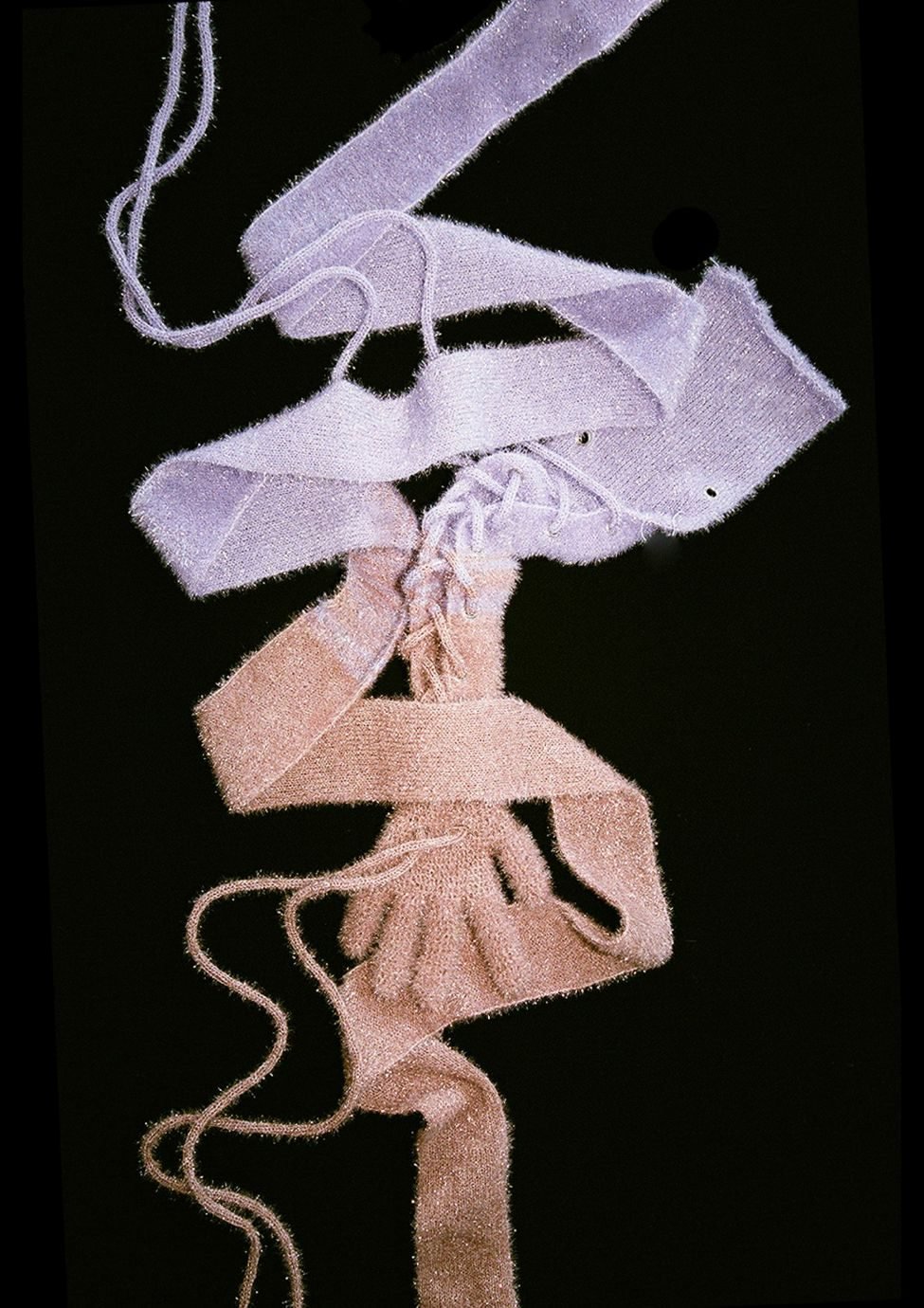What is your background in fashion education and how did this lead you to the Swedish School of Textiles (SST)?
When I started looking into studying fashion design, I mainly looked at schools in London. Back then, I had the mindset that London was the only place where I could find good fashion schools. It was on my foundation year studying Fashion Design at Marangoni that I realised I had picked the right path for me and was determined to continue studying fashion, this time with a more open mind towards institutions outside of London, particularly SST. What made me so interested in SST was their incredible labs and resource availability, something I had not seen in many institutions before. I also liked that the school is very invested in sustainability and encourages students to always think about it when designing.
How has SST helped you develop as a fashion creator?
I value the fact that SST has made me feel comfortable talking about my work with others. We often give each other constructive criticism, which is very helpful, as giving and receiving critique really helps to reflect upon your own work and to develop as a designer. It also makes you more confident, which is very important when working in the fashion industry.
“My idea was to explore a changeable quilt design by making a harness that when tied on the jacket, creating a unique 3D surface.” – Freja Seihine
One of your more recent projects included puffer jackets. Could you explain the inspiration behind this project?
The project was a collaboration with Peak Performance, and it was focusing on reinventing the puffer jacket in a sustainable way. I was mostly interested in the 3D puffer surface blocks we often associate with the jacket and how different quilting designs can bring different expressions to the piece. My idea was to explore a changeable quilt design by making a harness that when tied on the jacket, created a unique 3D surface. I explored sustainability through reusing clothing, aiming to decrease consumption levels. During the fruition of this project, I was greatly inspired by the work of Michaela Stark, likening the natural curves of the body to the quilt design of my jacket.
I started the project with experiments, using different objects to see what shapes come out of a puffy material. After rough sketching, I looked at all my experiments and decided what I wanted to take further. I then continued to make sketches and a toile. Once finished with this, I tried different ways of draping the straps to find the exact form I wanted for the finished garment, before finally choosing materials and colours.
























